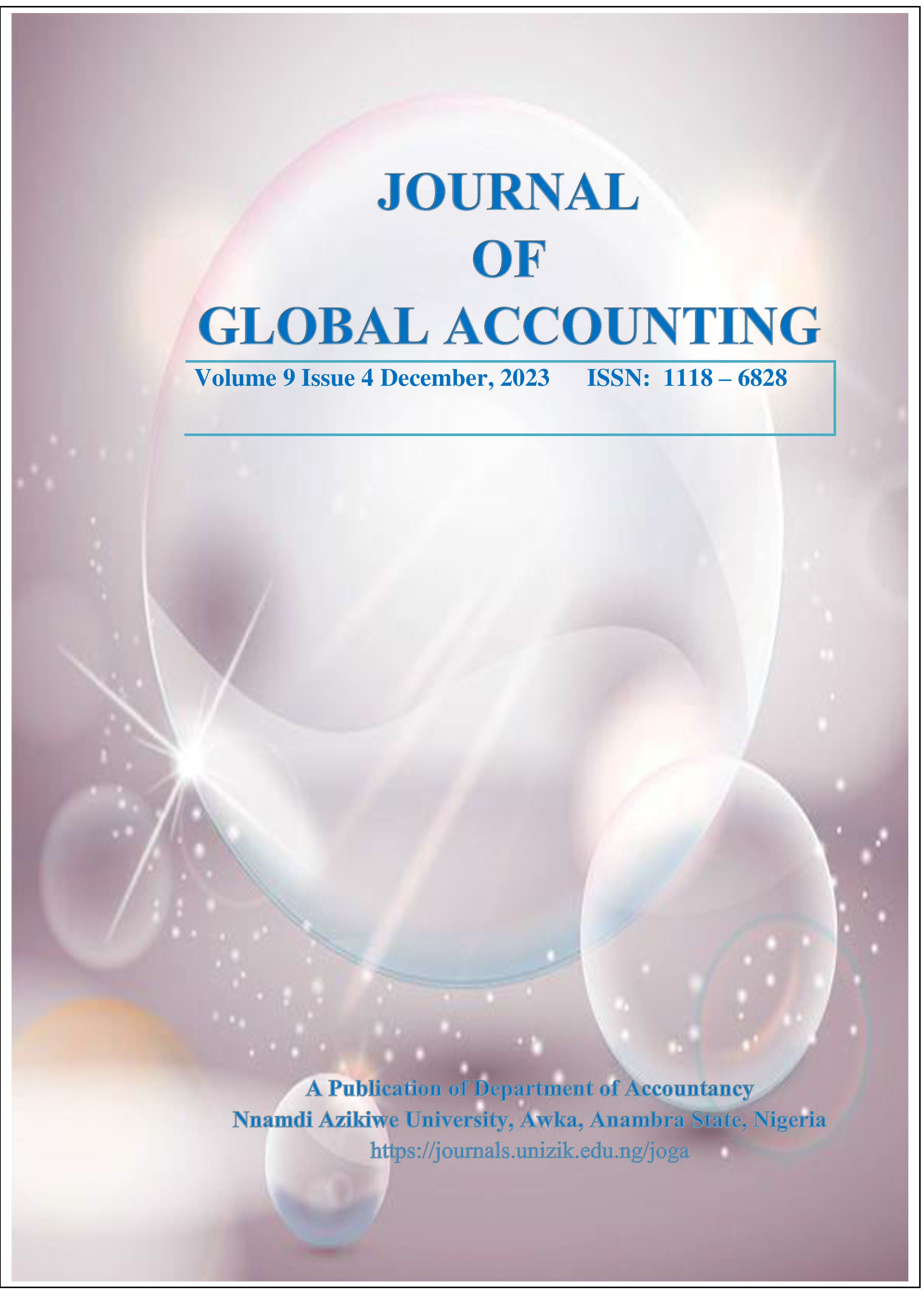DIVIDEND POLICY AND CAPITAL INVESTMENT ON SHARE PRICE VOLATILITY IN NIGERIA
Keywords:
Capital Investment, Dividend Pay-Out Ratio, Dividend Per Share, Dividend Policy, Dividend Yield, Earnings Volatility, Share Price VolatilityAbstract
This study examined how dividend policy and its interaction with capital investment affects share price volatility in Nigeria banking industry from 2013-2022. The study used a sample of 13 commercial banks quoted on the Nigeria stock exchange Preliminary analyses were also conducted, such as descriptive statistics and correlation matrix. In analyzing the data, the study adopted panel multiple regression to identify the possible effects of dividend policy and capital investment on share price volatility. The study employed Pooled and panel data regression with least square dummy variable as time and organizational dummies were created to account for any effect which vary over time and across section. The result showed that dividend per share and dividend pay-out ratio has a significant positive effect on share price volatility while dividend yield shows a significant negative effect on share price volatility while earnings volatility is insignificant. However the interaction of dividend yield and capital investment (dy*capinv) indicates a 5% significant negative influence on share price volatility this implies that in every 5% reduction in dividend yield and capital investment there will be a 5% reduction in share price. We concluded that corporate managers of the banks quoted on the Nigerian stock exchange can use dividend policy as a tool to control/manage share price volatility. We therefore, recommends that banks should try and improve on their financial performance that will enable consistent increase in the dividend per share for positive impact on market value.
Downloads
Published
Issue
Section
License
Copyright (c) 2023 Journal of Global Accounting

This work is licensed under a Creative Commons Attribution-NonCommercial 4.0 International License.
Articles submitted to JOGA should not have been published or are currently under review by another Journal. Kindly see the guide for the preparation of the manuscript for details. Successful submission of articles by author(s) for publication clearly implies that the work is not an infringement of any existing copyright warranty as JOGA reserves the right to be indemnified by the author(s) where any breach of such warranty is proven. For ease of dissemination and to ensure proper policing of use, papers and contributions become the legal copyright of JOGA once published unless otherwise agreed.
Permission clearance should be obtained by the author(s) where applicable for the use of any content of interest not originally created by them. This must be done before the submission of the article to JOGA. Failure to do so may lead to a lengthy delay in publication, as JOGA is unable to publish any article which has permissions pending. Thus, the rights JOGA requires are:
- Non-exclusive right to reproduce the material in the article or book chapters.
- Print and electronic rights.
- To use the material for the life of the work (for instance, there should be no time restrictions on the re-use of material).
Where tables, figures or excerpts of more than 250 words are reproduced from another source, it is expected that:
- Author(s) should obtain the necessary written permission in advance from any third-party owner of the copyright for the use in print and electronic formats of any of their text, illustrations, graphics, or other material in their manuscript. Permission must also be cleared for any minor adaptations of any work not originally created by the author(s). The author (s) should not assume that any content freely available on the web is free to use.
- Where the author adapts a significant number of any material, the author(s) must inform the copyright holder of the original work.
- Author obtains any proof of consent statements
- The author must acknowledge figure(s) and content adopted or adapted in work utilizing source(s) and further capture them in the list of references.

